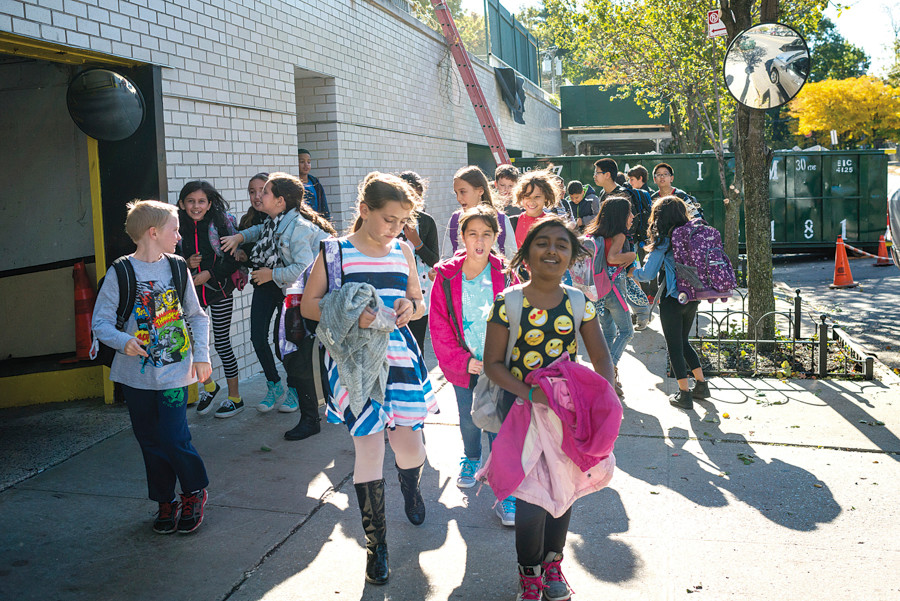Are our schools failing?
Riverdale’s public schools are generally considered to be strong. And, on the face of it, why shouldn’t they be? Much of the area’s population is made up of middle- and upper-middle class families — a social class whose children, on average, tend to show better academic performance than their less-privileged peers in poorer neighborhoods. Riverdale’s scenery and low crime rates are likely to attract top faculty talent. Many Riverdalian parents are actively involved in their children’s education. The two elementary public schools in the area — the Spuyten Duyvil School (P.S. 24), and the Robert J. Christen School (P.S. 81) — offer much-lauded art programs.
Sounds like a great place for a kid to go to school, right?
If you thought so, you might wish to take a closer look.
While overcrowding problems at both P.S. 24 and P.S. 81 are well-known, the schools’ academic performance is, nonetheless, generally held in high regard. At P.S. 24, some 46 percent of students meet state standards on the state English test, according to the latest Education Department data for the 2014-2015 academic year, compared to the city’s average of only 30 percent.
This may sound impressive, but the next bit of data provided by the Education Department suggests a different picture:
Students from other schools in New York City with backgrounds that are the most similar to those of students at P.S. 24, based on their incoming test scores, economic need and other factors — the “comparison group,” in Education Department terms — showed a 53-percent success rate on the state English test. The 7-percentage point advantage over P.S. 24 may not be huge, but it’s there.
At P.S. 81, the state’s standards on the English test were met by 42 percent of students in 2014-15. This is also above the city’s average, but slightly below the school’s “comparison group” rate of 44 percent.
Schools in the northwest Bronx schools beyond Riverdale generally fare more poorly. At the Sheila Mencher School (P.S. 95) in Van Cortlandt Village — a tranquil, tree-lined, mostly middle-class neighborhood — only 19 percent of students met the state’s standards on the English test in 2014-15. Its comparison group’s rate stood at 21 percent that year, according to the Education Department.
Perhaps it should come as no surprise that the Education Department has chosen school District 10 in the Bronx — the northwest section of the borough that includes Riverdale and Van Cortlandt Village, along with other neighborhoods — as a place to deploy a cohort of reading coaches this year to train elementary school teachers.
District 10 is one of only four districts in New York City that will receive the first cohort of coaches when the training program, officially known as the Universal Literacy Initiative, begins this fall. The districts have been selected for having high shares of third-graders who fail to meet the state’s English-language test standards.
Finally, another bit of Department of Education data to add to the picture: At the Success Academy Bronx 1 charter school in the south Bronx — an institution that draws much praise and much criticism for its rigorous instruction and other aspects of its approach to education — a whopping 70 percent of students met the state’s standards on the English test. That’s more than twice the city average of 30 percent. And unlike elementary schools P.S. 24, P.S. 81 and P.S. 95, the charter school actually exceeds its “comparison group” rate — which stands at 58 percent.
Also unlike the three elementary public schools, the charter school has a nearly exclusively black and Hispanic student body — groups that, according to the Education Department, generally fare worse on state tests than white or Asian students. Some 98% of the charter school’s students are black or Hispanic, and, given the school’s location in the south Bronx, many come from underprivileged neighborhoods or have to travel a considerable distance each day to get to school.
Riverdalian elementary public schools’ success rates on the state English test of 42 percent and 46 percent seem anemic by comparison.
The fact that many schools in the city show even lower performance rates should hardly serve as a consolation. And while the problem of poor reading skills among school students may have no easy fix, the community should look into more ways of improving academic performance at the ailing local schools.






